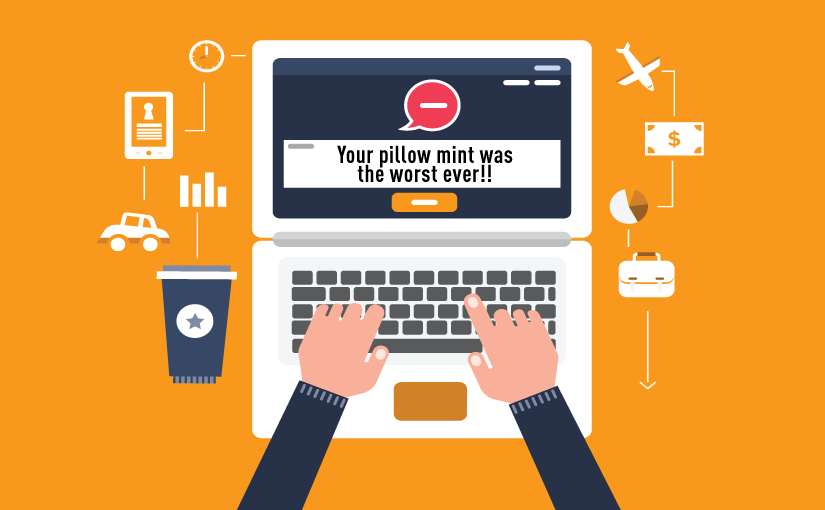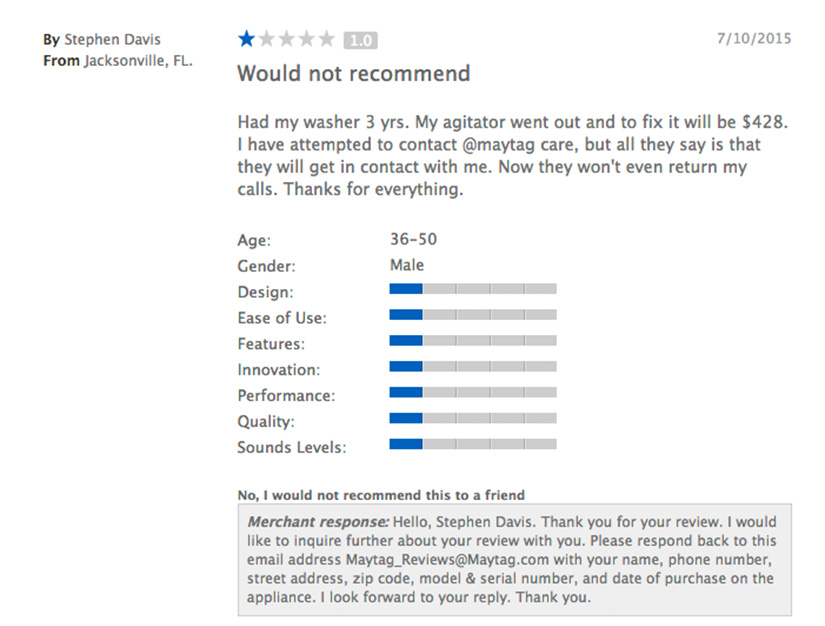Given the anonymous, Wild-West nature of the Internet, it’s become harder than ever to maintain control over your brand image. The web is replete with examples of fake or malicious reviews designed to either boost a less-than-stellar product’s appeal or even scarier, cut the legs out from under a competitor. Your safe haven, of course, is your own website. Here, you have complete control over what consumers see and learn about you.
Unless, of course, you decide to keep it real …
I’m talking about allowing consumers to post reviews of your products or services on your own website, and that includes (grab the smelling salts) negative ones. To echo what I’m sure is an oft-heard response from the executive suite, “Now why in the hell would we ever do that?!” We’ll tell you why. Here are three powerful reasons for allowing consumers to post reviews, including negative ones, on your own website.
1. A few bad reviews are actually good for business.
Yes, you read that correctly. Bad reviews can actually improve customer conversion rates. Now, you certainly don’t want a majority of the reviews posted on your website to be negative but you do want some. The level of trust a consumer places in customer reviews is directly related to the perceived authenticity of those reviews. A company who only allows positive reviews and testimonials on their website will find it difficult to gain that trust. Research conducted by ratings and reviews service provider, Reevoo, reports that 68% of consumers trusted reviews more when they see both good and bad scores. So don’t panic when a customer posts a review that’s less than complimentary.
2. You bring complaints into an environment you control.
When a customer posts a negative review of your product on a third-party website, you don’t always have an effective way to respond. A customer who’s bound and determined to vent about something you’ve sold them is going to get it out there in cyberspace so why not invite them into your living room to air their grievance? After all, it’s always better to hear criticism to your face rather than behind your back. Now you at least have a fighting chance of turning a foe into a friend with a response. Assuming the customer review widget you have plugged into your site allows you to respond, you have an opportunity to not only placate the customer in question, but also show lurking, potential buyers your commitment to customer service.
A RightNow Customer Experience Impact Report demonstrates the power that answering complaints can have over changing customer attitudes. Their research showed 46% of customers who received responses to complaints left happy, with half of them actually following up with a positive review about the company.
The lesson: Respond! If you don’t have the bandwidth to customize your responses with a personal touch, the form-letter approach below that Maytag uses is better than nothing.
3. Fake reviews are becoming easier to root out.
Malicious reviews posted by unethical competitors or their trollish brethren are a genuine concern. Consumers, however, seem to be aware of this. A Bazaarvoice survey from 2013 found that 48 percent of respondents in the U.S. believe one or more of the reviews they read online is fake. The good news is those same consumers were likely to be more trusting if they knew reviews were managed by a third party. Bazaarvoice and other firms provide these services and utilize ever-evolving anti-fraud technology along with human review.
One thing’s for sure—online reviews are powerful. Some 70% of Internet buyers will read an online review before making a purchasing decision. Letting buyers post them on your own website—warts and all—can be a powerful conversion tool.





